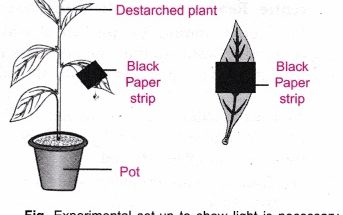Activity 1.2- Observing Fungal Growth on Bread is a simple experiment for Class 7 students to understand fungal growth and its characteristics. Let’s explain the activity in detail using straightforward language.
Activity Objective
The purpose of this activity is to observe how fungi grow under certain conditions.
Key Concepts of fungi and decomposition
Fungi
What Are Fungi?
- Fungi are organisms that include molds, yeast, and mushrooms. They are different from plants and animals.
Where Do They Grow?
- Fungi often grow in moist and warm environments. They can be found on bread, pickles, leather clothes, and other articles, especially in hot and humid weather.
How Do They Get Their Food?
- Unlike plants, fungi do not make their own food through photosynthesis. Instead, they absorb nutrients from the environment around them.
- They feed on dead and decaying matter, which is why you often see them on old bread or other decomposing materials.
Decomposition
What is Decomposition?
- Decomposition is the process of breaking down dead organic material into simpler substances.
Role of Fungi in Decomposition-
- Fungi play a crucial role in this process. They break down dead and decaying matter, returning nutrients to the environment.
- This process is vital for the ecosystem, as it recycles nutrients and helps in the natural cycle of matter.
Saprotrophic Nutrition-
- The type of nutrition where organisms feed on dead and decaying matter is called saprotrophic nutrition.
- Organisms that use this mode of nutrition, like fungi, are called saprotrophs.
Also Check – Chapter 10- A Detailed Guide to “Nutrition in Plants” Activities for Class 7 Students
Procedure
- Preparing the Bread- Take a piece of bread and moisten it with water. The moisture helps create an environment suitable for fungal growth.
- Creating the Environment- Place the moist bread in a warm, moist place. These conditions are ideal for fungi to grow.
- Observation Period- Leave the bread in these conditions for 2-3 days.
Observing Fungal Growth-
- After 2-3 days, check the bread for fluffy patches. These patches are colonies of fungi.
- Look at the color of these patches, as it can vary depending on the type of fungus.
- Using a microscope or magnifying glass, observe the structure of the fungi. You should be able to see cotton-like threads called hyphae.
Learning Outcomes
- Understanding the conditions that promote fungal growth.
- Observing the physical characteristics of fungi, such as their color and structure.
- Gaining an understanding of the role of fungi in nature, particularly in decomposition.
Frequently Asked Questions on Fungi and Decomposition
Question- Why do fungi prefer to grow on bread?
Answer- Fungi prefer to grow on bread because it provides a nutritious and moist environment. Bread is rich in organic materials like carbohydrates, which fungi use as food. The moisture helps in the growth and spread of fungal spores.
Question- Can all fungi be seen with the naked eye?
Answer- No, not all fungi are visible to the naked eye. Some fungi, like the ones that might grow on bread, can form visible colonies. However, many fungi exist as spores or in mycelial form which are microscopic and can only be seen under a microscope.
Question- Are all fungi harmful?
Answer- No, not all fungi are harmful. While some fungi can cause food spoilage and diseases, others are beneficial. For example, yeast, a type of fungus, is used in baking and brewing. Penicillin, an important antibiotic, is derived from a fungus.
Question- What are the cotton-like threads observed on the bread?
Answer- The cotton-like threads observed on the bread are called ‘hyphae.’ These are the long, thread-like structures of the fungus, which spread out to absorb nutrients and water from the bread.
Question- Why do fungi grow faster in warm and moist environments?
Answer- Fungi grow faster in warm and moist environments because these conditions are ideal for the growth and reproduction of fungal spores. Moisture and warmth facilitate the metabolic processes of fungi, leading to quicker growth and spread.
Question- How do fungi contribute to the ecosystem?
Answer- Fungi play a crucial role in ecosystems as decomposers. They break down dead and decaying organic matter, returning essential nutrients back to the soil, which helps in the growth of plants and maintains the natural balance.
Question- Can fungi grow on other substances besides bread?
Answer- Yes, fungi can grow on various organic substances besides bread. This includes fruits, vegetables, wood, leather, and even on living organisms as parasites.
Question- What should we do to prevent fungal growth on food?
Answer- To prevent fungal growth on food, it is important to store food in dry, cool, and clean conditions. Refrigeration and proper food packaging can also help inhibit fungal growth.
Also Check – Hydrilla Experiment – Reveals the Release of Oxygen during Photosynthesis
Also Check – Rapid Revision – Class 7 Science -Chapter 1- Nutrition in Plants – Complete Notes
Also Check – Chapter 1- Nutrition in Plants -Class 7 – Detailed Notes
Also Check – Nutrition in Plants – Class 7 Questions with Answers Worksheet
Also Check – NCERT Solutions for Class 7 Science Chapter 1: Nutrition In Plants
Also Check – NCERT Exemplar Solutions- Class 7 Science – Chapter 1 – Nutrition In Plants
Also Check – What are the function of Stomata
Also Check – Class 7- Chapter 1 – Nutrition in Plants – 4 Worksheets with Answer Key
